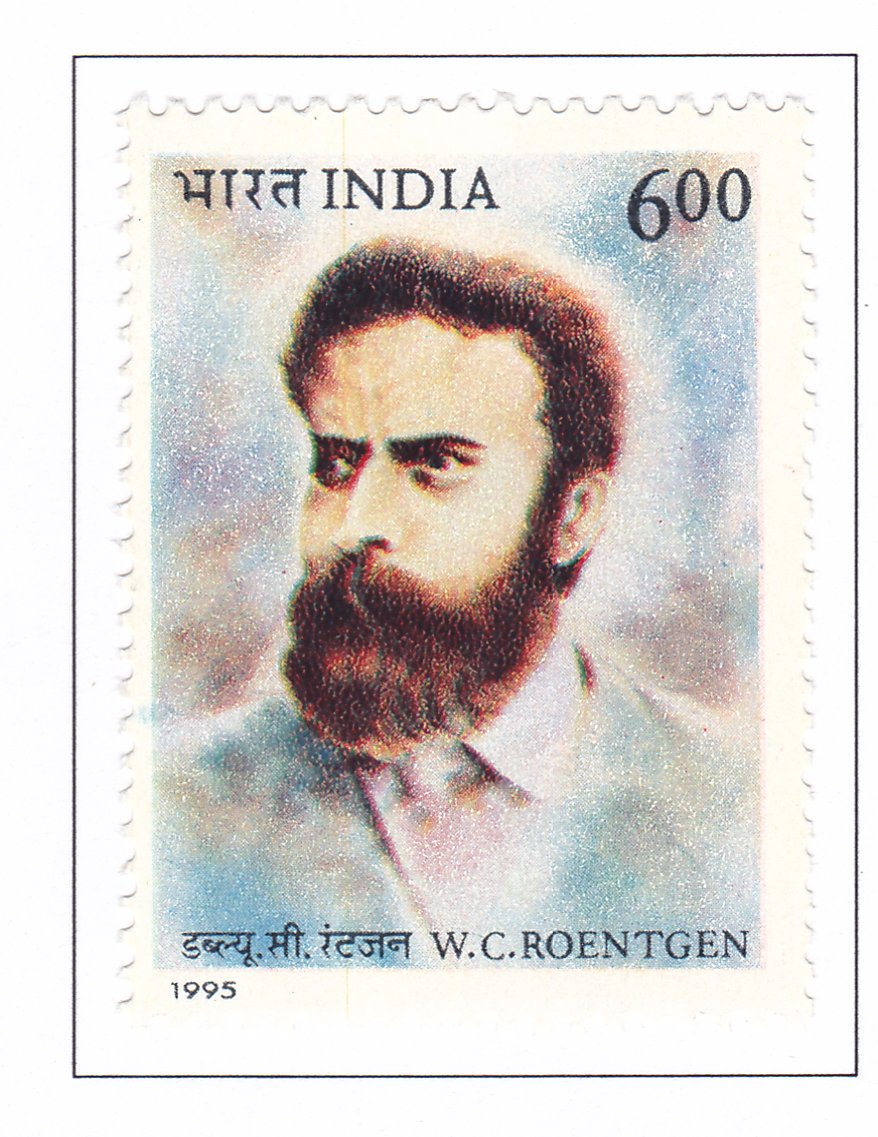W. C. Roentgen (1845-1923)

Technical Data
| Date of Issue | November 8, 1995 |
|---|---|
| Denomination | Rs. 6 |
| Quantity | 600,000 |
| Perforation | comb 13 x 13½ |
| Printer | Security Printing Press, Nashik |
| Watermark | No Watermark |
| Colors | Multicolor |
| Catalog Codes |
Michel IN 1479 Stamp Number IN 1538 Yvert et Tellier IN 1258 Stanley Gibbons IN 1642 |
| Themes | Anniversaries and Jubilees | Chemistry | Inventors | Nobel Laureates |
Table of Contents
W. C. Roentgen
Wilhelm Conrad Roentgen, born on March 27, 1845, in Lennep, Germany, is renowned for his discovery of X-rays, a groundbreaking development in the field of radiology. His life and achievements offer a fascinating glimpse into the journey of a scientist whose work revolutionized medical diagnostics and imaging.
Early Life and Education
Roentgen faced several educational setbacks early in his life. He was dismissed from high school for a prank and was initially refused admission to the University of Utrecht. Despite these challenges, he pursued his studies at the Swiss Federal Polytechnic School in Zurich, Switzerland.
Discovery of X-Rays
In November 1895, Roentgen made the momentous discovery of X-rays (or Roentgen rays). His observations were initially published in a local journal in Würzburg in January 1896. His discovery was met with skepticism, but it quickly gained recognition. Thomas Edison, acknowledging Roentgen’s contribution, remarked that Roentgen was a “pure scientist” who might not benefit financially from his discovery but whose work would be appreciated from a commercial perspective.
Impact and Legacy
Roentgen’s discovery of X-rays marked the beginning of radiology. His work laid the foundation for subsequent advancements in medical imaging and diagnostics. Over the years, the field evolved from static radiographs to more advanced techniques, including:
- Computerized Tomography (CT Scans): Developed independently by Allan M. Cormack and Sir George Hounsfield, providing detailed cross-sectional images of the body.
- Position Emission Tomography (PET): Offering insights into metabolic processes within the body.
- Ultrasound: Utilizing sound waves to create images of internal body structures.
- Magnetic Resonance Imaging (MRI): Using magnetic fields and radio waves to produce detailed images of internal organs and tissues.
Academic and Professional Achievements
- In April 1900, Roentgen was appointed Professor of Physics and Director of the Physical Institute at Ludwig Maximilians University in Munich.
- He received the first Nobel Prize in Physics in 1901 for his discovery of X-rays.
Roentgen retired in 1920 and passed away on February 10, 1921. His legacy endures through the continuous advancements in radiology and medical imaging technologies.
Commemoration
In honor of the 100th anniversary of his discovery, the Department of Post issued a stamp featuring Roentgen and the world’s first official X-ray image. The First Day Cover (FDC) highlights this historic X-ray, showcasing the profound impact of Roentgen’s work on science and medicine.
Roentgen’s contributions continue to influence the fields of medical diagnostics and imaging, demonstrating the lasting significance of his pioneering work.
